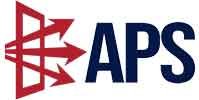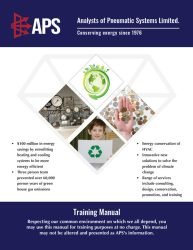APS has developed many unique HVAC logic circuits: improving comfort and reducing energy consumption.
The reductions caused the avoidance of over 60,000 person-years of GHG emissions with a three-person crew. Sample reductions calculated by the building owners are presented in section six of the APS training manual. Some reductions exceeded 50%, with payback periods of less than one year.
The most effective path to sustainable HVAC efficiency is to bring designers, building operators, service technicians and programmers to a common sense understanding of the control logic. The persons designing / programming / commissioning / servicing the systems should be able to provide clear explanations regarding the coordination of all functions of the system if that person was operating it manually under all load conditions.
Lack of an in-depth understanding of all HVAC functions may still allow a semi-competent person to attain acceptable comfort levels, but resulting increased energy costs and environmental damage are not acceptable.
Examples of improving failed HVAC logic
Example One
An energy conservation circuit was installed by a major controls company a year before APS was called to address extreme discomfort conditions in that laboratory. APS gained dramatic improvement in comfort according to the laboratory’s manager by altering the year-old “conservation” circuit The APS logic also achieved a 49.75% heating reduction over the “year-old energy conservation circuit” for a period of time at exactly the same outdoor air temperature.
The APS case study on SINGLE ZONE describes the energy conservation circuit development. (Pages 8.63 – 8.78)
Example Two
APS as called to a high school to address extreme discomfort. The temperature of the radiators’ heating water was altered based on outdoor air temperature. The cooler the outdoor air became: the hotter the water became. Most buildings use this method, but as logical as this sounds the building was often overheating.
APS devised an experiment. The basic considerations were:
1) If the outdoor condition was 32˚F and sunny with no wind, a person could go outside with no coat and be OK.
2) If the outdoor condition was 32˚F in a blizzard, a person would need a winter coat and gloves to survive.
If thermal impact on us at the same outdoor temperature varies, it must apply to buildings as well.
The experimental circuit continually sampled multiple rooms’ heating requirement. The circuit allowed the coolest room to demand the heating water temperature to barely keep the coolest room within the acceptable comfort zone. The original design provided water at 150˚F at 30˚F outdoors.
The conservation circuit varied the water temperature from 80˚F to 130˚F at 30˚F outdoors.
The experiment resulting in significant comfort improvement and a 33% reduction in natural gas consumption.
The APS case study on HOT WATER RESET COMPARING CONVENTIONAL TO COOLEST ROOM LOGIC describes the energy conservation circuit development. (Pages 8.126 – 8-145)
Example Three
Humidification requires a lot of heat energy to evaporate the water. With logical HVAC control the required energy can be retrieved from air that normally would be rejected from the building by the exhaust ducting, while maintaining identical temperature control in the occupied spaces.
This logic reduced the Etobicoke Board of Education’s main office building’s gas consumption by 52.6% with less than a day’s labour and a few dollars in materials.
The APS case study on EVAPORATIVE COOLING OPPORTUNITY VIA SPRAY HUMIDIFIERS describes the energy conservation circuit development. (Pages 8.90 – 8.103)
Other conservation case studies
MULTIZONE CASE STUDY 8.79 – 8.80
HUMIDEX CASE STUDY 8.123 – 8.125
VAV PERFORMANCE CASE STUDY 8.146 – 8.147A
ENTHALPY COMPARATOR CASE STUDY 8.104 – 115B
ENTHALPY/DRY BULB COMBINED LOGIC 8.116 -8.122
RESIDENTIAL NIGHT SETBACK 8.148 – 8.159
SOME EXAMPLES OF HVAC SYSTEMS HIDING ENERG LOSS 5.38 – 5.5.43A

